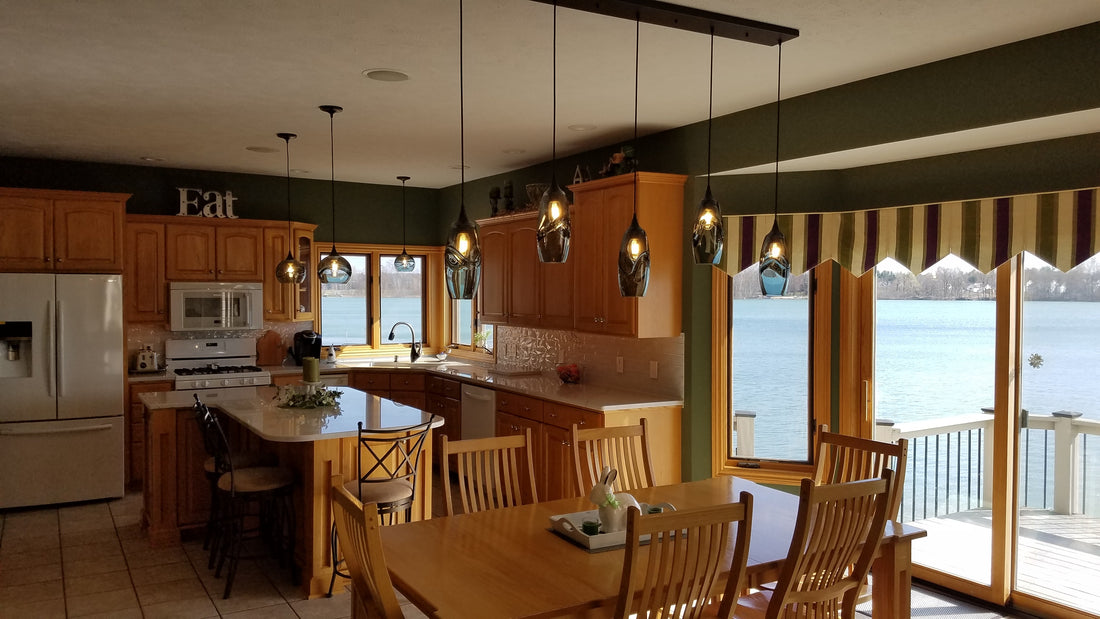
How to Choose the Right Lighting Fixture
Our home lighting fixtures play a larger role in our home’s overall functioning than many tend to think. From setting the mood and tone of a visit to allowing us to perform mundane tasks, lighting is what helps us to accomplish these things. As such, without it, we risk not utilizing the space within our homes to the fullest. It’s important to know, however, that not just any fixture can provide you with the lighting and look you’re after. In fact, with how many options there are on the market, it can be a challenge to even decide. So, while you might be currently overwhelmed with your number of options, learning how to choose the right lighting fixture can help you shop with confidence.
Familiarize Yourself with the Different Types of Lighting
Having a firm grasp on your home’s overall lighting components is the first key step in getting the most out of the fixture choosing process. Otherwise, it’s much more difficult to narrow down your options and find the fixture that works best in the space. This step involves educating yourself on the different types of lighting and how they each affect the home environment—even if you don’t notice. These are the three main types of lighting you need to know:
Ambient Lighting
Ambient lighting, also known as background lighting, is the main light source in a room and, as such, uses fixtures with the largest coverage. It’s what provides a space with a base of illumination that covers nearly the entire area. Because this type of light is widespread, it’s rarely the brightest visible light source, but it’s still essential in establishing an atmosphere.
Task Lighting
Task lighting is then layered on top of ambient lighting to put a more refined focus on the areas of a room where you perform important activities. Busy areas of the home such as the kitchen, office, and bathroom typically have ample task lighting for this reason. These narrowed fixtures are designed to provide one or two smaller areas with a higher concentration of light so that you can see clearly when completing projects.
Accent Lighting
Considered the final touch of a room’s lighting plan, accent lighting is the most decorative of the three types. This lighting draws attention to certain design points within a space such as a work of art, a fireplace, or even a staircase. In doing so, the overall design of an area is emphasized, and the true beauty of your home design can be appreciated.
Identify Which Type You Need
The next crucial step is to apply your knowledge of home lighting types to what you need. Even if you couldn’t place what was missing in your lighting plan before, this new information should give you a few ideas. For instance, if you notice that you have enough light to work by, but your background lighting seems dim, you might want to try using more ambient lighting. On the other hand, if your overhead lighting is overpowering any of your other light sources, you may want to dial it back and incorporate more task and accent lighting. Finding the right combination and look for a particular room is all about creating a balance between these layers. Then, once you know what you need, you can tailor your fixture search to match your desired type of lighting.
Adhere to Space-Specific Lighting Guidelines
It’s also important to mention that certain areas of the home have specific lighting guidelines for you to follow. So, if you’re purchasing a lighting fixture for any of these select locations, you’ll need to abide by another set of rules for the best effect. The kitchen island is one such space. No matter what you’re doing with this area, you’ll need a lot of task lighting to properly use it. This is why, instead of just using ambient lighting, kitchen islands also require the addition of pendant lighting to provide more illumination. Some other areas of the home that require unique lighting arrangements include the entryway, dining room, and porch.
Match Your Needs to the Fixture Type
Once you have all these contributing factors in mind, it’s finally time to choose the right lighting fixture for these needs. Because there are a lot of different lighting fixtures you could potentially choose from, the more you narrow down your options, the easier this process will be. For ambient lighting, it’s often most effective to go with fixtures that have a lot of coverage, such as recessed lighting or wall sconces. Those needing accent or task lighting, though, can utilize models such as chandeliers, pendants, and track lighting.
Refine the Look of Your Lighting Fixture
Finally, after deciding on the most effective type of fixture for your home, you can turn your attention to refining its design. From modest brass and copper tones to vibrant silver and gold hues, there are a series of metal accents to incorporate, depending on your existing style. It’s important to remember that the design you choose should heighten the rest of your home’s effectiveness and draw out its charm. This is why it’s often most effective to use colors that are similar to ones you already have in place. One trick to tell whether your fixture choice is a good match is to compare its colorings to the other hardware already present in your home. In the kitchen, for instance, this means the metal accents should be similar to that of your cabinet handles or faucet.
Proper home lighting isn’t just about the different fixtures and the lighting they produce individually. In fact, it involves the combination of these elements and, in turn, the lasting effect they have on your home’s design. That’s why it’s important to us at Bicycle Glass Co. that our customers leave our site with the perfect lighting fixtures to complement their existing needs. Whether it’s our signature hand-blown glass pendant lights or our sophisticated chandeliers, we want you to love your new lights as much as we loved making them. This way, you’ll feel excited to incorporate them into your home and proud to show them off to guests.

